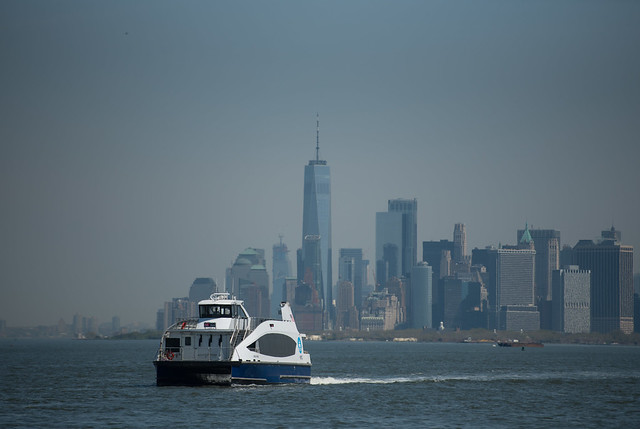Over the past few years, as subway service reliability has declined, New York City Transit has been loathe to take responsibility for the various delays, slow speeds and assorted problems. Instead, they’ve taken to blaming riders, and in particular, the high number of them, for delays. This isn’t particularly satisfying or rider-friendly, and it’s also come across as disingenuous. Delays due to too many riders isn’t a cause; it’s a symptom — a symptom of a poor and unprepared management.
An MTA prepared for increasing ridership, and perhaps an MTA that had noticed trends in the late 1990s and early 2000s and anticipating increasing growth, would have built demand into the system. A modern signal system in place before the current one started to completely break down would have allowed the MTA to ramp up service as ridership increased, but instead, we have a system weighted down by numerous signal timers that limit both train speeds and system capacity, thus leading to overcrowding that can further slow down trains. As I said, it’s a symptom and not a cause.
Now, though, Andy Byford has a plan to stop this victim-blaming. As Dan Rivoli reports in The Daily News today, the new New York City Transit president would like to phase out blaming delays on “overcrowding” and identify instead the root cause of these delays. Rivoli reports:
NYC Transit President Andy Byford and his team are ditching the “overcrowding” category in an overhaul of how information on train delays is collected and reported. Officials will use the data to speed up slow trains and fix spotty service, cutting down on the number of late trains.
Byford, in an interview with the Daily News, called “overcrowding” a “misrepresentation” and “misnomer.” Now, with the MTA in a repair blitz to fix aging equipment that causes major commuting headaches, Byford plans to tackle the small holdups and slowdowns that make for a crummy ride. “They just find that the service is very patchy, it’s very gappy,” Byford said, speaking of commuters. “That’s very frustrating to them. Our trains per hour isn’t as high as the signaling system will permit.”
…MTA board members on Monday will see the new way that delays will be tracked and tallied, which is still a work in progress. The most significant change will be the ambiguous “overcrowding” category, which became the most commonly cited reason for late trains that effectively blamed the riders for suffering subway performance. A new “operating environment” category will now cover many of the overcrowding and unassigned mystery delays.
While seemingly vague sounding, these metrics will have teeth behind them. As Rivoli reports, “operating environment” delays will include delays due to signal timers, and the “right of way” delay category will be axed in favor of one that specifically identifies delays due to failed signals and associated repair work. Much of these changes were driven by Rivoli’s reporting earlier this year when he detailed how the MTA hid the true causes of delays in the “overcrowding” category, and some increased transparency is much welcome.
On the surface, this isn’t a move with a direct impact on most riders. New Yorkers don’t really care why their trains are delayed; they just want to know that fewer and fewer trains will be delayed in the future. That is, however, something the MTA hasn’t been able to promise of late. But this granular level of delay information gets Transit on the right track toward combating delays. It’s easy to ignore delays due to “overcrowding” if you think overcrowding is the root cause of the problem. It’s harder to ignore delays due to signal timers when you know signal timers are the cause of the delays, and it’s easier to combat these delays by identifying and eliminating those signal timers that aren’t absolutely necessary.
These are of course baby steps, but they’re the right baby steps that Byford has to force Transit to take so service can get better in the future. He’s still saying and doing the right things, and as long as he has political cover to act, slowly and surely, he can work the subways out of this crisis. It’s going to be a long ride though, but at least it’s not one delayed by you and me and the 5.6 million other subway riders every day.
















